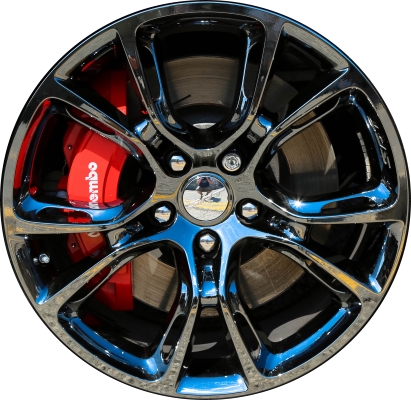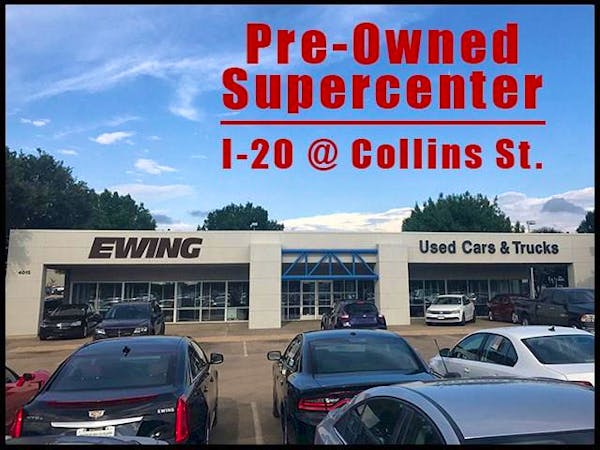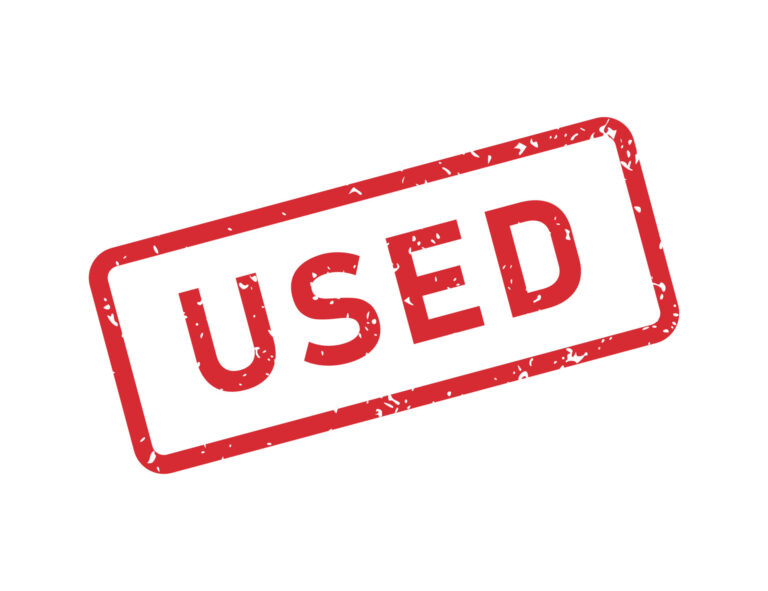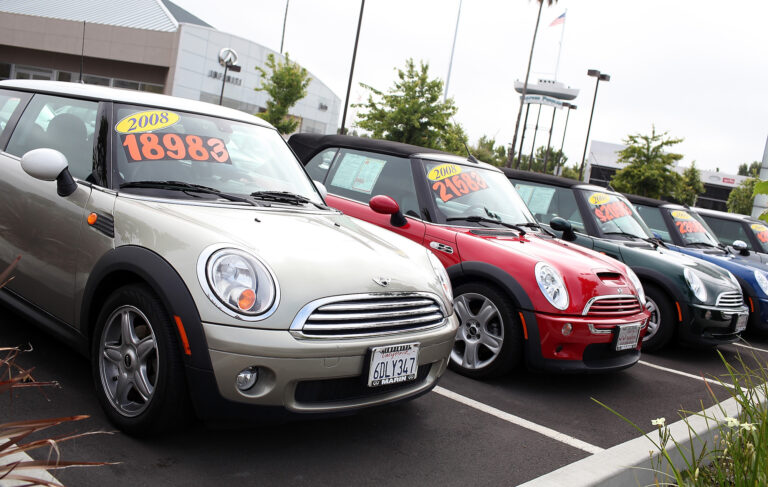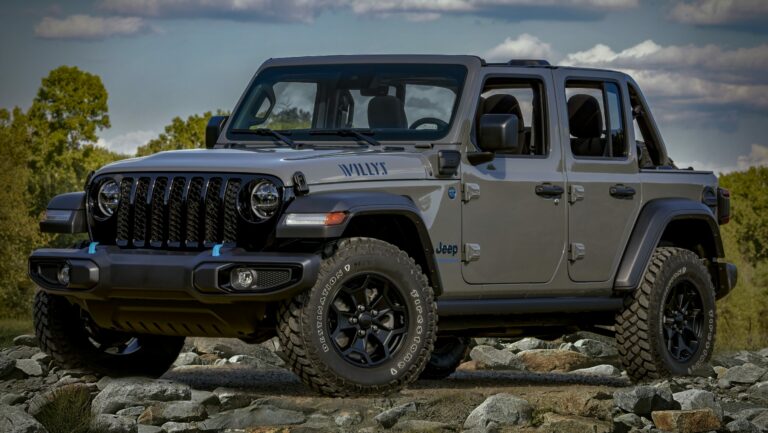Jeep SRT Wheel Specs: A Comprehensive Guide to Performance, Fitment, and Aesthetics
Jeep SRT Wheel Specs: A Comprehensive Guide to Performance, Fitment, and Aesthetics jeeps.truckstrend.com
The Jeep Grand Cherokee SRT and its even more potent sibling, the Trackhawk, are automotive marvels that blend the practicality of an SUV with the heart-stopping performance of a supercar. At the core of their formidable presence and dynamic capabilities lie their wheels – a critical component that dictates not only their aggressive stance but also their handling, braking, and overall performance. Understanding Jeep SRT Wheel Specs is paramount for owners looking to maintain peak performance, enhance aesthetics, or safely venture into the world of aftermarket customization.
This comprehensive guide will delve deep into every crucial aspect of Jeep SRT wheel specifications, from fundamental measurements to the nuances of offset and backspacing, providing you with the knowledge needed to make informed decisions for your high-performance SUV.
Jeep SRT Wheel Specs: A Comprehensive Guide to Performance, Fitment, and Aesthetics
I. The Heart of Performance: Understanding Core Wheel Specifications
Every wheel, whether stock or aftermarket, is defined by a set of precise measurements. For the Jeep Grand Cherokee SRT and Trackhawk, these specifications are finely tuned to accommodate their immense power, heavy curb weight, and robust braking systems.
- Diameter: This is the measurement of the wheel’s rim from one side to the other, typically expressed in inches. Jeep SRT and Trackhawk models primarily come with 20-inch or 21-inch wheels from the factory. While 20-inch wheels offer a slightly larger tire sidewall for comfort and some off-road capability (though not their primary design), 21-inch wheels often contribute to a more aggressive aesthetic and can allow for larger brake calipers.
- Width: The width of the wheel, also measured in inches, determines the tire’s contact patch with the road. Factory SRT/Trackhawk wheels are commonly 10 inches wide, though some aftermarket options or specific OEM variants might be 10.5 or even 11 inches. A wider wheel generally allows for a wider tire, enhancing grip and stability, particularly in high-speed cornering.
- Bolt Pattern (PCD – Pitch Circle Diameter): This is arguably the most critical spec for fitment, indicating the number of lug holes and the diameter of the imaginary circle that passes through their centers. For all Jeep Grand Cherokee SRT and Trackhawk models, the bolt pattern is 5x127mm (or 5×5 inches). This means there are 5 lug holes, and they are arranged on a circle with a diameter of 127 millimeters. Mismatching this specification will prevent the wheel from bolting onto the vehicle’s hub.
- Offset (ET): Measured in millimeters, offset is the distance from the wheel’s hub mounting surface to the wheel’s true centerline.
- Positive Offset: The mounting surface is towards the front (outer side) of the wheel’s centerline. This tucks the wheel further into the fender. Most OEM SRT wheels have a positive offset.
- Negative Offset: The mounting surface is towards the back (inner side) of the wheel’s centerline, pushing the wheel outwards from the fender.
- Zero Offset: The mounting surface is exactly at the wheel’s centerline.
For Jeep SRTs, common OEM offsets range from +50mm to +56mm. Understanding offset is vital because it affects fender clearance, brake caliper clearance, and the vehicle’s track width. An incorrect offset can lead to rubbing issues or compromise handling.
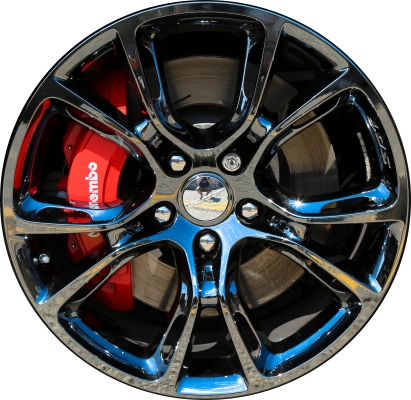
- Center Bore: This is the diameter of the hole in the center of the wheel that fits over the vehicle’s hub. For the Jeep Grand Cherokee, the factory hub bore is 71.5mm. Wheels should ideally be "hub-centric," meaning their center bore matches the vehicle’s hub diameter precisely. If an aftermarket wheel has a larger center bore, hub-centric rings are required to ensure the wheel is centered on the hub, preventing vibrations and ensuring proper load distribution.
- Backspacing: While related to offset, backspacing is the measurement from the hub mounting surface to the wheel’s inner lip. It’s crucial for ensuring inner clearance with suspension components, brake lines, and inner fender wells. It’s often easier to conceptualize offset, but backspacing plays a direct role in internal fitment.

II. OEM vs. Aftermarket: Navigating Your Options
Jeep Grand Cherokee SRT and Trackhawk owners have a choice between sticking with factory-designed wheels or exploring the vast world of aftermarket options.

- OEM Wheels: Factory wheels for the SRT and Trackhawk are engineered specifically for the vehicle’s demanding performance characteristics. Examples include the iconic "Goliath," "Spider Monkey," and "Lightweight Performance" wheels, often available in 20×10 or 20×10.5 configurations.
- Pros: Guaranteed fitment, rigorous testing for durability and load capacity, designed to clear the massive Brembo brakes, maintain factory aesthetics.
- Cons: Limited design choices, can be very expensive to replace new, typically heavier than high-performance aftermarket forged options.
- Aftermarket Wheels: The aftermarket offers an almost limitless array of designs, finishes, materials, and weights.
- Pros: Unique aesthetics, potential for weight reduction (improving unsprung mass), wider range of widths and offsets for custom stances, often more cost-effective than new OEM.
- Cons: Requires careful selection to ensure proper fitment (especially brake clearance), load rating must be sufficient for the heavy SRT/Trackhawk, quality can vary significantly between manufacturers, incorrect specs can lead to rubbing or performance degradation.
When considering aftermarket wheels, key considerations include:
- Load Rating: The Jeep Grand Cherokee SRT/Trackhawk is a heavy vehicle. Ensure any aftermarket wheel has a sufficient load rating to safely support the vehicle’s weight and dynamic forces.
- Brake Clearance: The Brembo brakes on SRT/Trackhawk models are substantial. Verify that the inner barrel design of any aftermarket wheel provides adequate clearance for the calipers.
- Weight: Lighter wheels reduce unsprung mass, which can improve acceleration, braking, and handling. Forged wheels are generally lighter and stronger than cast wheels but come at a higher cost.
- Material: Cast wheels are more affordable, while forged wheels offer superior strength-to-weight ratios.
III. The Impact of Wheel Specs on Performance and Aesthetics
Every millimetre and inch in wheel specifications translates directly to how your SRT or Trackhawk looks and performs.
- Handling and Ride Quality: A wider wheel and tire combination generally increases grip and stability, particularly in corners. However, an overly wide setup or an incorrect offset can negatively impact steering feel and potentially introduce tramlining (where the vehicle follows road imperfections). Wheel weight also plays a significant role; lighter wheels reduce unsprung mass, allowing the suspension to react more quickly to road changes, improving ride quality and handling.
- Braking and Acceleration: Reducing unsprung weight through lighter wheels directly benefits both acceleration and braking. Less rotational inertia means the engine has less mass to spin up, and the brakes have less mass to slow down, leading to quicker stops and launches.
- Tire Fitment: Wheel width directly dictates the appropriate tire size. An optimal tire fitment ensures the tire beads seat correctly, the sidewall is supported, and the tire’s full tread width is utilized. Mismatched tire and wheel widths can lead to premature tire wear or unsafe handling.
- Aesthetics and "Stance": Offset is the primary determinant of how far the wheel sits relative to the fender. A lower positive or slightly negative offset will push the wheels outwards, creating a "flush" or "aggressive" stance, filling the wheel wells more completely. However, pushing them out too far can cause rubbing issues, especially under compression or when turning.
IV. Practical Advice and Installation Tips
Making changes to your SRT’s wheels requires careful consideration and execution.
- Measuring Existing Wheels: Before purchasing new wheels, verify your current wheel specs. This can often be found stamped on the inside of the wheel or by physically measuring.
- Using Online Calculators: Numerous online wheel offset calculators can help you visualize how different offsets and widths will affect your wheel’s position relative to your fenders and suspension components.
- Professional Consultation: For complex setups or if you’re unsure, consult with a reputable wheel and tire specialist. They can offer expert advice on fitment, load ratings, and performance considerations.
- Torque Specs: Always tighten lug nuts to the manufacturer’s specified torque (typically around 130 ft-lbs or 176 Nm for the Grand Cherokee SRT/Trackhawk). Use a torque wrench and follow a star pattern to ensure even tightening and prevent rotor warping or wheel damage. Re-check torque after 50-100 miles.
- TPMS (Tire Pressure Monitoring System): Your SRT/Trackhawk uses TPMS sensors. When changing wheels, these sensors can either be transferred to the new wheels or new compatible sensors can be installed. Ensure they are correctly programmed to your vehicle.
- Hub Rings: If your aftermarket wheels have a larger center bore than your vehicle’s hub (71.5mm), hub-centric rings are essential. These rings bridge the gap, ensuring a snug, hub-centric fit that prevents vibrations and evenly distributes the wheel’s weight.
V. Potential Challenges and Solutions
Even with careful planning, challenges can arise when modifying wheel setups.
- Rubbing Issues: The most common problem. If wheels or tires are too wide, or the offset is too aggressive, they can rub against fenders (especially during turns or suspension compression) or internal suspension components.
- Solutions: Adjusting offset (if possible), selecting a narrower tire, fender rolling (a last resort, often irreversible), or minor suspension modifications.
- Brake Caliper Clearance: Aftermarket wheels must clear the large Brembo calipers. Some wheel designs, particularly those with a concave spoke profile or a shallow inner barrel, may not provide adequate clearance.
- Solutions: Using wheel spacers (if safe and legal), selecting wheels specifically designed for large brake clearance, or contacting the wheel manufacturer for fitment guarantees.
- Vibration: Often caused by improper wheel balance, bent wheels, or the absence of hub-centric rings when needed.
- Solutions: Professional wheel balancing, installing hub rings, checking for bent wheels.
- Load Rating Mismatch: Using wheels with insufficient load ratings is a serious safety concern, as it can lead to wheel failure.
- Solutions: Always verify the load rating before purchase and ensure it meets or exceeds the vehicle’s requirements.
Comprehensive Jeep SRT Wheel Specs & Example Price Table
Please note: Prices for wheels vary widely based on condition (new/used), material (cast/forged), brand, and market demand. The prices below are estimated ranges for a single wheel and are for illustrative purposes only. Actual prices may differ significantly.
| Wheel Type / Name | Diameter | Width | Offset (ET) | Bolt Pattern | Center Bore | Material | Est. Price Range (New/Used, per wheel) |
|---|---|---|---|---|---|---|---|
| OEM "Goliath" | 20" | 10" | +50mm | 5x127mm | 71.5mm | Cast | $300 – $800+ |
| OEM "Spider Monkey" | 20" | 10" | +50mm | 5x127mm | 71.5mm | Cast | $400 – $900+ |
| OEM "Lightweight Perf." | 20" | 10" | +50mm | 5x127mm | 71.5mm | Forged | $800 – $1500+ |
| OEM Trackhawk 20" | 20" | 10" | +50mm | 5x127mm | 71.5mm | Cast | $400 – $900+ |
| OEM Trackhawk 20" (Black) | 20" | 10" | +50mm | 5x127mm | 71.5mm | Cast | $500 – $1000+ |
| OEM Trackhawk 21" (Optional) | 21" | 10.5" | +56mm | 5x127mm | 71.5mm | Forged | $1200 – $2500+ |
| Aftermarket Forged (e.g., HRE) | 20"-22" | 10"-11" | Custom (e.g., +30 to +50) | 5x127mm | 71.5mm / Custom | Forged | $1500 – $3000+ (per wheel) |
| Aftermarket Cast (e.g., Replica) | 20"-22" | 10"-11" | Varies (e.g., +35 to +50) | 5x127mm | 71.5mm / Custom | Cast | $200 – $600+ (per wheel) |
Frequently Asked Questions (FAQ)
Q1: What is the standard bolt pattern for a Jeep SRT/Trackhawk?
A1: The standard bolt pattern is 5x127mm (or 5×5 inches).
Q2: Can I put 22-inch wheels on my SRT/Trackhawk?
A2: Yes, 22-inch wheels are a popular aftermarket upgrade. However, you must ensure proper offset and tire sizing to avoid rubbing and maintain adequate brake clearance. Often, a slightly lower profile tire is needed.
Q3: Do I need hub rings for aftermarket wheels?
A3: You need hub-centric rings if the aftermarket wheel’s center bore is larger than the Jeep’s hub bore (71.5mm). This ensures the wheel is perfectly centered and prevents vibrations.
Q4: What’s the best offset for a flush look on an SRT/Trackhawk?
A4: For a flush look without rubbing, offsets typically range from +30mm to +45mm on a 10-inch wide wheel, depending on tire size and vehicle suspension. This is a common area for experimentation, and test fitting is always recommended.
Q5: How much do OEM SRT/Trackhawk wheels weigh?
A5: OEM cast wheels (like Goliath, Spider Monkey) typically weigh around 30-35 lbs (13.6-15.9 kg) per wheel. The optional forged "Lightweight Performance" or Trackhawk 21" wheels are lighter, often in the 25-30 lbs (11.3-13.6 kg) range.
Q6: Will wider wheels improve my SRT’s performance?
A6: Wider wheels allow for wider tires, which can increase the tire’s contact patch, leading to improved grip, better handling, and shorter braking distances. However, excessive width can also lead to increased rolling resistance and potential rubbing issues.
Q7: What tire size goes with the stock 20×10 wheels on an SRT/Trackhawk?
A7: The most common stock tire size for 20×10 wheels on SRT/Trackhawk models is 295/45R20.
Conclusion
Understanding Jeep SRT wheel specs is more than just knowing numbers; it’s about appreciating the engineering that goes into these high-performance vehicles and making informed choices that affect their safety, performance, and aesthetic appeal. Whether you’re replacing a damaged OEM wheel, upgrading for a custom look, or seeking marginal performance gains, paying meticulous attention to diameter, width, bolt pattern, offset, and center bore is crucial. By equipping yourself with this knowledge, you ensure that your formidable Jeep Grand Cherokee SRT or Trackhawk continues to perform at its peak, turning heads and delivering an exhilarating driving experience for years to come.

